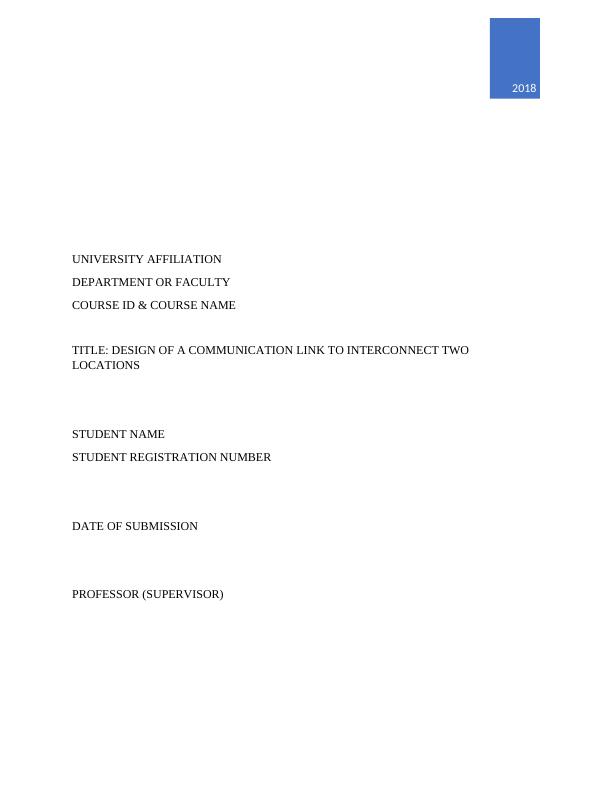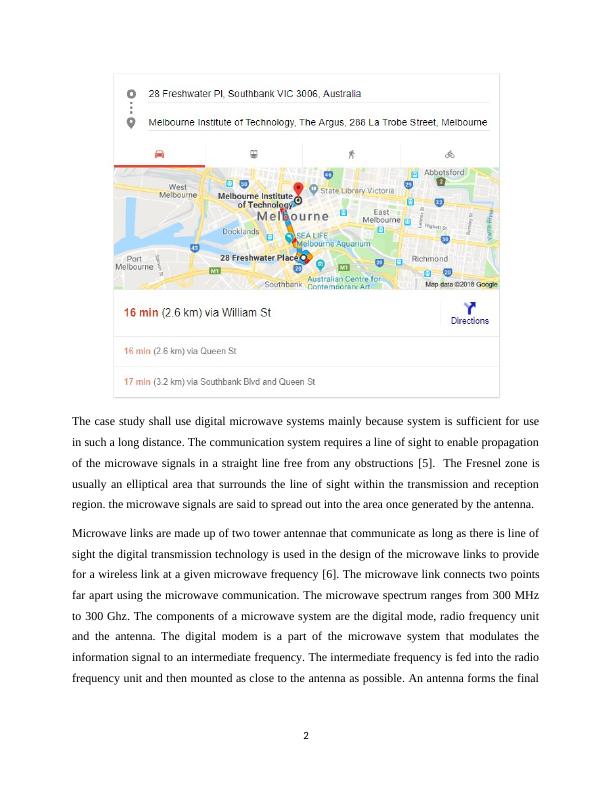Design of a Communication Link to Interconnect Two Locations
Design and implement a communication link between CPA and MIT organizations for multimedia exchange
10 Pages2220 Words189 Views
Added on 2023-06-13
About This Document
This case study focuses on establishing a microwave link between two buildings 2.6km apart. It discusses the use of digital microwave systems, path profile construction, and economic evaluation of telecommunication systems.
Design of a Communication Link to Interconnect Two Locations
Design and implement a communication link between CPA and MIT organizations for multimedia exchange
Added on 2023-06-13
ShareRelated Documents
End of preview
Want to access all the pages? Upload your documents or become a member.
Functional Specification and Design of FM Radio Frequency Channels
|11
|1378
|354
Understanding Link Budget in Radio Link Microwave Transmission System
|8
|1093
|197
Link Budget Analysis in Electronics
|9
|1496
|251
ECE 6351 - Assignment on Microwave Engineering
|17
|2284
|255
ITC 513 - Wireless Networking Concepts : Assignment
|5
|1066
|32
Interconnecting 2 Locations
|12
|2034
|221



